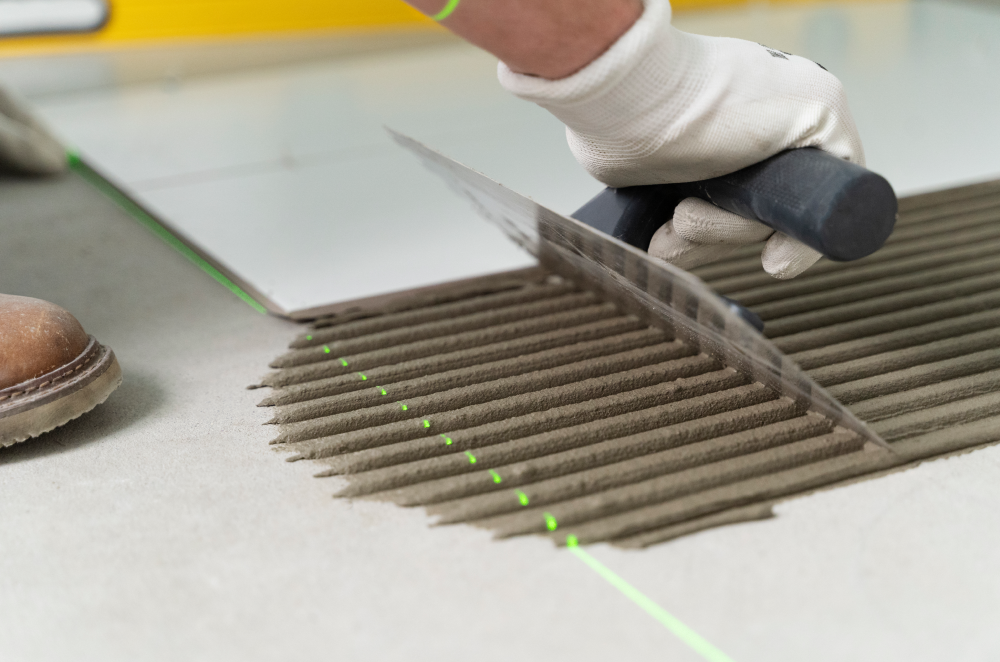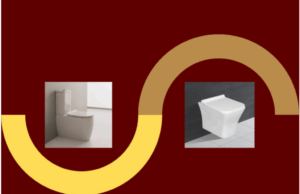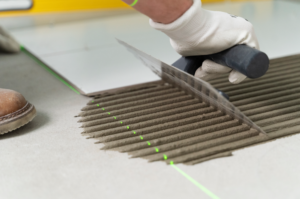Tile laying is an art that requires precision, patience, and attention to detail.
Often we will come across this dilemma of how to lay the tiles?
Whether we should use spacers or can we lay it as joint less/paper joints?
Before we get into that let us understand the characteristics of tiles
,ceramic and vitrified both included.
As per IS:15622:2017 norms tiles are allowed for a tolerance variation of
- +/_ 0.2% deviation in length and width
- +/_ 5% deviation in thickness.
- +/- 0.3% deviation in surface flatness
- 0.2% deviation in rectangularity(squareness).
Keeping in mind the above permitted parameters,one has to execute the job of
laying the tiles that must look
- Uniform appearance
- Pleasing to eyes
- Feels good
- Professional finish
This is where laying of tiles with spacers becomes handy compared to paper Joints.One often overlooked aspect of tile laying is the use of spacers. These small, seemingly insignificant pieces of plastic or metal can make all the difference in achieving professional-looking results. In this
guide, we’ll explore the advantages of using spacers in tile laying and provide tips on how to use them effectively
What are Tile Spacers?
Tile spacers are small devices used to maintain even grout joints between tiles.
They come in various sizes and materials, including plastic, metal, and
adjustable spacers.
What Advantages of Using Spacers?
-1.Consistent Grout Lines:
- Uniform appearance: Spacers ensure that the gaps between tiles are even
- and consistent, creating a visually appealing and uniform look. This is
- especially important for intricate patterns or when using contrasting
- grout colors.
- Professional finish: Even grout lines are a hallmark of a professional tile
- job. Spacers help achieve this level of quality,
-2.Accommodating Tile Movement:
Expansion and contraction: Tiles, like most materials, expand and contract with
temperature and moisture changes. Spacers create space for this movement,
preventing tiles from cracking or popping up due to pressure.
Structural integrity: Without proper spacing, tiles can push against each other,
causing stress that can lead to damage over time.
-3.Facilitating Proper Grouting:
Adequate space: Spacers provide enough room for grout to fill the gaps completely
and create a strong bond between the tiles.
Preventing weak spots: If tiles are too close together, grout may not penetrate fully,
leaving weak spots that are prone to cracking or water damage.
-4.. Easier Installation:
Alignment and spacing: Spacers act as guides, helping you maintain consistent
alignment and spacing throughout the installation process. This makes the job easier,
especially for larger areas.
Reduced errors: By ensuring proper spacing from the start, spacers minimize the
need for adjustments and corrections later on, saving time and effort.
-5.Enhancing Durability:
Preventing damage: Proper spacing allows for some flexibility in the tile installation,
reducing the risk of tiles chipping, cracking, or becoming loose due to minor impacts
or shifts in the substrate.
Long-lasting results: By promoting proper grout adhesion and accommodating tile
movement, spacers contribute to a more durable and long-lasting tile installation
Types of Tile Spacers*
Tile spacers are small devices used to maintain even grout joints between tiles.
They come in various sizes and materials, including plastic, metal, and
adjustable spacers.
- Plastic Spacers: Plastic spacers are the most common type of
spacer. They’re inexpensive and come in various sizes. - Metal Spacers: Metal spacers are more durable than plastic spacers
and are often used for larger tile installations. - Adjustable Spacers: Adjustable spacers are versatile and can be
used for various tile sizes and patterns.
Tips for Using Spacers Effectively*
Tile spacers are small devices used to maintain even grout joints between tiles.
They come in various sizes and materials, including plastic, metal, and
adjustable spacers.
- Choose the Right Size: Select spacers that match the size of your
tiles. - Place Spacers Correctly: Place spacers at the intersection of four
tiles to ensure even grout joints. - Remove Spacers After Adhesive Sets: Remove spacers after the
adhesive has set to prevent them from becoming stuck.
Conclusion
Tile spacers are small devices used to maintain even grout joints between tiles.
They come in various sizes and materials, including plastic, metal, and
adjustable spacers.
HAPPY TILE LAYING !!!!






